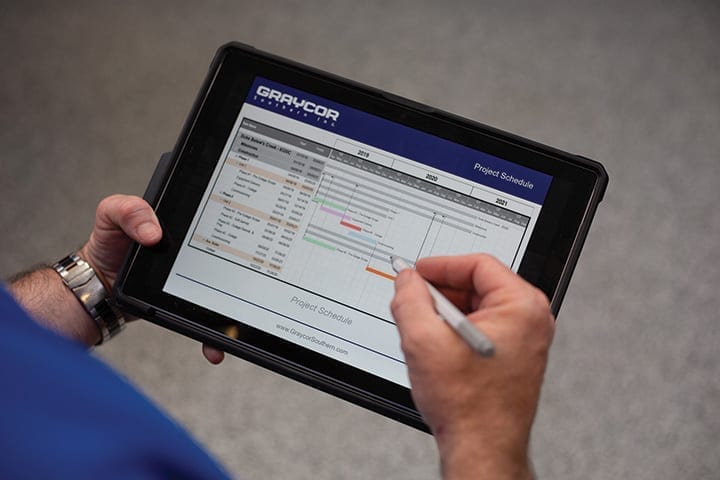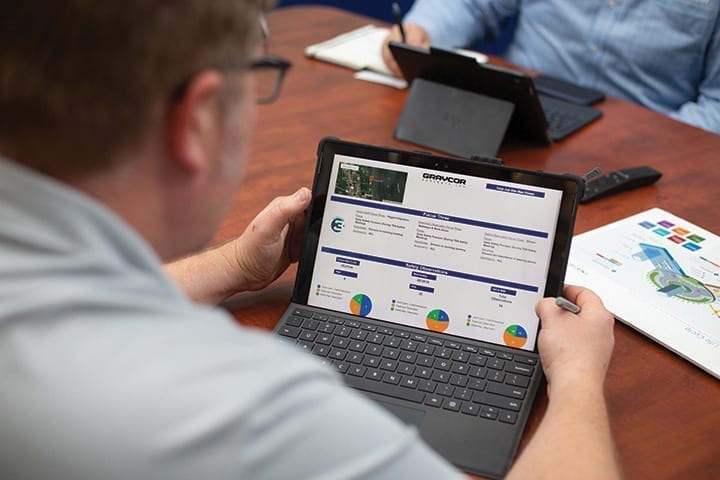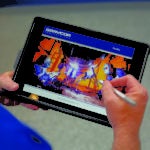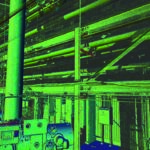This is the last of a three-part series on technology in construction. In the May issue, Part I focused on predicting and adapting to change. Part II—in the July issue—examined choosing and implementing solutions. This month, Part III looks at a few common issues facing power plant projects and the ways they are being addressed using technology.
Technologies are created and developed to solve specific pain points. Therefore, companies should not adopt “tech for tech’s sake,” but should identify problems or inefficiencies in existing processes and focus on the technologies that can solve those problems.
Identifying helpful technologies is complicated by the fact that many have proven track records in some applications but are not living up to expectations in others. This is because technology adoption does not happen in a steady, linear fashion. The tendency is for new products to hit the market in waves. With each wave, consumers get overexcited in the short term, while underestimating long-term effects.
Gartner, a leading research and advisory company, offers insights on how a technology is initially perceived, how it is adopted, and how it matures. Gartner captures those insights in its “Hype Cycles” curve. According to Gartner, each new technology trigger is met with a period of inflated expectations—the “hype.” Because optimism and imagination outpace reality, the hype is followed by a “trough of disillusionment.” During this trough, despite the public losing faith that their initial expectations will be realized, the underlying technology continues to grow. Eventually the technology begins to demonstrate its real value and progresses beyond the trough, a phase Gartner calls the “slope of enlightenment.” Finally, the application or product enters a mature, productive phase of adoption known as the “plateau of productivity.” Once it has reached this plateau, a technology is in widespread use.
When a company or facility owner first begins to research tech tools, it can be very useful to consider where a given tool currently falls on Gartner’s conceptual curve. The following areas of construction business practice are faced with significant pain points. Fortunately, several of these areas have maturing, plateaued technologies that can significantly reduce jobsite challenges. There are, however, many nascent technologies whose immediate return on investment may be less certain.
Site Analysis and Existing Conditions
Real-world or as-built conditions introduce many variables—and headaches—into construction projects. Team members often make assumptions that are double-checked and rectified too late. This not only has a negative impact on project cost and schedule, but also results in project team members backpedaling, resolving issues reactively instead of proactively.
Digital photography has made it cheaper and easier to take photos and video of a jobsite. New photo formats—such as 360-degree globe views or photogrammetry (in which software tools are used to create a rough 3D model using photographs taken from multiple angles)—improve the amount of information captured. These technologies have mostly plateaued, offering a great improvement to jobsite productivity.
Light detection and ranging (LIDAR), also known as laser scanning, creates accurate point clouds of real-world conditions. When attached to drones, both LIDAR and cameras further automate the capturing of data, and footage can be used to create a realistic 3D model of an entire site. Laser scanning of as-built conditions also improves efficiency on renovation projects. When unknown conditions, such as hidden ducts or walls, are discovered during demolition, they can cause a schedule delay, but LIDAR data can be analyzed by an outsourced party to identify variances ahead of critical paths. Unlike digital photography, LIDAR and drones have not quite matured into widespread use, but they are well on their way to doing so.
Design and Design Assist
When project documents are handed off from designer to contractor, a lot of information and background can get lost. Contract structures are to blame for much of this; however, when operating within trusting environments and collaborative contract structures, several technologies can have a big impact.
When contractors are allowed to add layers of information to a building information model (BIM), estimating and constructability analyses are easier. Contractors not only get the benefit of being able to utilize information they can trust, but they know more about why design decisions were made and can offer valuable insights. BIM is currently the most advanced technology providing design assistance beyond the more traditional 2D drawing and PDF technologies.
Virtual reality (VR) and mixed reality are useful for helping customers visualize their future space. It is very common to create a virtual mockup at 10% or less of the cost of a real-world mockup. With the growth of VR, senior project managers and superintendents can “walk the job,” creating deficiency logs and to-do lists long before any bodies, tools, or equipment are on-site. A hurdle for VR technology is that there is a cultural barrier consumers face, as “gamers” are often the ones seen wearing VR headsets. Consumers also have very high expectations of how well a tool should be able to mimic reality. These inflated expectations cause VR technology to remain headed into a “trough of disillusionment” at the present time.
Estimating
Computers are great at counting, but historically, BIM tools have been too difficult for estimators to manage. New tools allow estimators to access information in a model, gleaning insights without needing to understand how to create the model in advanced interfaces such as Revit by Autodesk or Bentley’s AECOsim. With specific BIM-for-estimators training, preconstruction teams can learn how to query BIM models to “slice and dice” 3D views, count elements that might be elusive to find in drawings, and create markups or questions for design teams to further define. It can be expected, therefore, that BIM as an estimating tool may soon plateau into a widely used technology.
Tools are also emerging in the bid management and subcontractor prequalification realm. Bid management tools are aimed at connecting general contractors with subcontractors interested in bidding a certain project. The most sophisticated bid management tools create a profile of a subcontractor’s financial stability to determine their risk of default. The fact that these tools are emergent, however, means they are still in the “hype” phase.
Scheduling
Scheduling and sequencing are areas ripe for technological disruption (Figure 1). Both involve routine cognitive tasks connected by rules-based logic that refer to a finite number of elements in the finished building.
 |
|
1. Project scheduling software is widely used throughout the construction industry. Much of the technology is mature, but new features are being added regularly. Courtesy: Graycor |
BIM for scheduling (4D BIM) has spent time in the “trough of disillusionment” due to difficult-to-use software and a disconnect between virtual design and construction (VDC) staff and schedulers. BIM is just beginning to offer value on a large scale when it comes to scheduling, putting it on the “slope of enlightenment” for this use case. BIM can connect elements of a building model to elements of the project schedule, giving a visual snapshot of how the project should look on any given day.
Laser scanning is beginning to be used to determine if elements from a design are or are not installed on the jobsite. While still in its infancy, laser scanning as applied to scheduling can help determine exactly where an element is in its implementation.
Even earlier in the development phase as a scheduling tool is artificial intelligence (AI). While not ready for pervasive rollout, AI shows promise for assisting humans in defining rules-based relationships to building elements by, for example, running scenarios through powerful cloud-based computers to return recommended scheduling possibilities.
Progress Monitoring
The digitization of recordkeeping is moving the needle furthest in the area of progress monitoring. Digitally recording items that used to be done on paper makes data available for a company’s enterprise resource planning (ERP) software, where it can be accessed by financial analysts to help assess the overall health of a project. Better “filing” of jobsite progress folders can be accomplished with specialized software (Figure 2).
 |
|
2. Tasks that used to be documented on paper are now routinely recorded and filed in software programs. Courtesy: Graycor |
Many technologies can gather data about the current status of construction for comparison against design and other schedule and budgetary expectations. Sensors can track temperature, humidity, and some environmental air quality/particulate levels, helping monitor such things as curing of concrete, humidity levels in enclosed spaces (which can identify water leaks), and sizes of stockpiles. Another growth area is computer vision, in which a computer analyzes information in a photo or video.
AI and machine learning are being employed in the area of progress monitoring, although, as in other areas, AI is still in its infancy. A few software programs can teach themselves to identify objects and/or people on a construction project. This will help automate some of the data collection that is being done manually about who and what is on-site, how often things are used and/or moved, etc.
Material Handling and Inventories
As more people look to manufacturing processes for ideas on how to make construction leaner, project management tools are being modeled on how manufacturers manage supply chains. Devices connected through the internet of things (IoT) can be embedded in tools, equipment, and materials to relay information, including location.
Radio frequency identification (RFID) uses wireless communication chips that incorporate the use of electromagnetic or electrostatic coupling to uniquely identify an object. Barcodes—either line-based barcodes like those used in retail or the more robust QR codes—can be easily applied to objects and convey a vast range of information. While not yet ubiquitous on the jobsite, IoT is one of the most sophisticated technologies supporting inventory and materials handling.
Longer Horizons
A few new technologies, like 3D-printed structures and smart glasses (in which a mini-screen is positioned in front of safety glasses), frequently make headlines. In reality, these technologies are still in early development and deployment is far out on the horizon. Rather than trying to guess what’s in the future, companies should familiarize themselves with tools that are already being adopted and invest in them where it makes sense.
As more and more technology startups bring construction tools to the market, there is an increase in the amount of “noise.” People also experience FOMO (fear of missing out), which understandably intensifies when they feel threatened by disruption. The solution is to thoroughly research the current state of a given technology, create a companywide strategy for implementing new technologies, then document and assess progress according to agreed-upon benchmarks. Technology tools that are wisely chosen will help companies make the most gains. ■
—Weston Tanner is director of Construction Technology and Innovation with Graycor.










